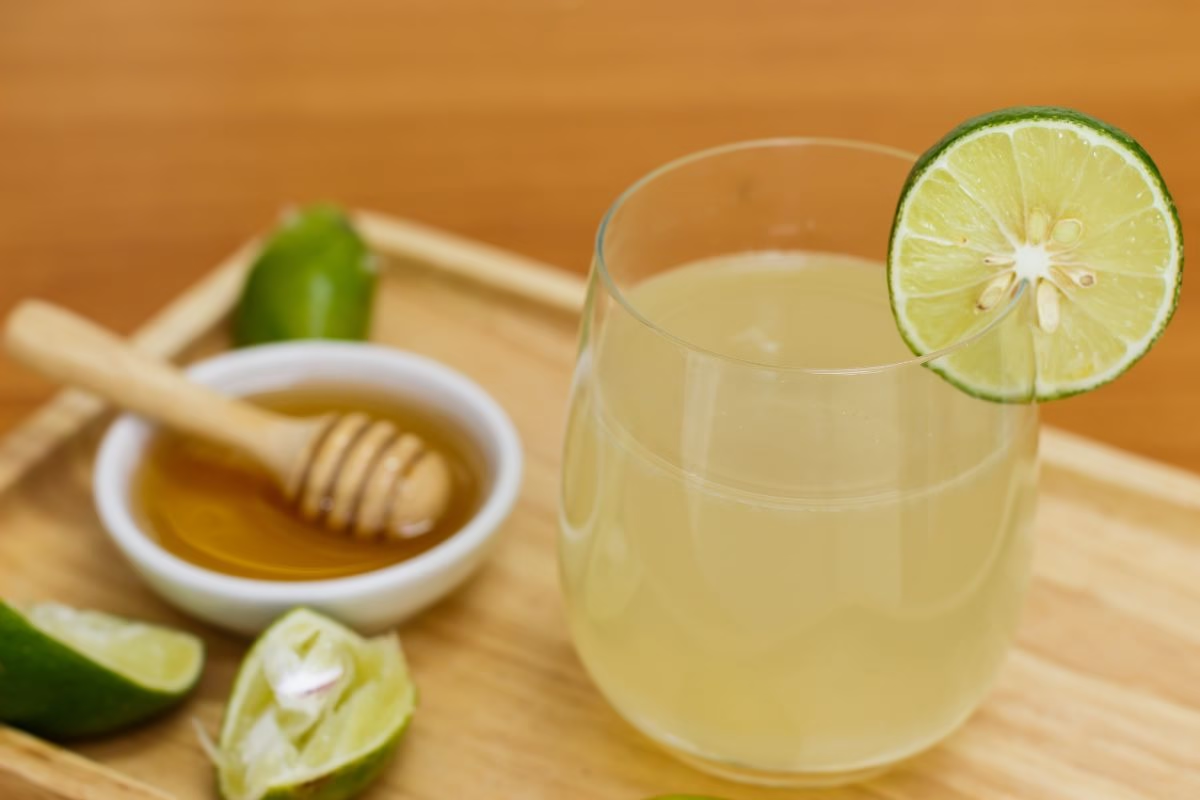Before we see the dietary guidelines, it’s essential to understand the characteristics of the Vata and Kapha doshas.
- Vata Dosha: Composed of air and ether elements, Vata is known for its cold, dry, and mobile nature. People with a predominant Vata constitution may experience dry skin, irregular digestion, and fluctuating energy levels.
- Kapha Dosha: Composed of earth and water elements, Kapha is heavy, moist, and stable. Those with a dominant Kapha prakriti tend to have a robust, steady build but may struggle with high weight, sluggish digestion, and emotional lethargy.
The Vata-Kapha Dosha combination requires a diet that balances the dryness of Vata with the heaviness of Kapha. You can harmonize both doshas and promote better health by focusing on warm, moist, and lightly spiced foods.
Medical issues common in vata kapha dosha imbalance
Vata can cause irregular digestion, bloating, and gas, while Kapha can lead to slow metabolism and weight gain. this may lead to severe Constipation, indigestion, or sluggish digestion issues.
Kapha contributes to excess mucus and congestion, while Vata causes dryness and irregular airflow, resulting in Sinus congestion, allergies, or asthma.
Vata imbalance can cause anxiety, restlessness, and insomnia, while Kapha imbalance may lead to depression, lethargy, or mental sluggishness, resulting in mood swings, fatigue, and difficulty focusing.
Vata causes dryness and stiffness in the joints, while Kapha leads to heaviness and sluggishness, resulting in joint pain, stiffness, or swelling.
Vata may cause weight loss or difficulty gaining weight, while Kapha can lead to weight gain or fluid retention, resulting in unstable weight or feeling unbalanced.
Vata contributes to dry, cracked skin, while Kapha can lead to oily skin or excessive moisture, which can result in dry skin, acne, or eczema.
Vata Kapha Dosha Balance Diet Management
-
Warm, Moist, and Nourishing Foods
It is important to balance both doshas. Eat warm, moist foods that are easy to digest. Choose cooked meals over raw foods to avoid aggravating Vata’s dryness and Kapha’s sluggish digestion. Focus on hearty soups, stews, and porridges to soothe the digestive system.
-
Eat in the right quantity
Since both Vata and Kapha can be prone to irregular digestion, it is important to eat in moderate quantities. Avoid overeating, which can increase Kapha’s heaviness. Aim for smaller meals that provide enough nourishment without feeling overly stuffed.
-
Spices to Stimulate Digestion
Warming spices are your ally when following a Vata-Kapha diet plan. Spices like ginger, cumin, black pepper, and turmeric are perfect for enhancing digestion, improving metabolism, and providing warmth to balance the coolness of Vata and the sluggishness of Kapha.
Healthy fats, such as ghee, olive oil, and coconut oil, sesame oil are beneficial for Vata’s dryness but should be consumed in moderation to avoid aggravating Kapha. These fats help nourish the body while maintaining digestive efficiency.
- Avoid Cold and Heavy Foods
Cold foods like raw salads, ice cream, and cold drinks should be avoided as they can worsen Vata’s balance and slow digestion, increasing Kapha’s heaviness. Instead, opt for warm meals and drinks to soothe the digestive system. Drinking warm water also helps a lot.
Vata Kapha Dosha Diet Plan
Morning :
- Warm lemon water: Refreshes and stimulates digestion.
- Herbal tea: Ginger tea or cinnamon tea helps promote warmth and digestive health.
Breakfast
- Warm semi-solid rawa upama with vegetables, ghee, a pinch of cinnamon, and ginger to soothe both doshas. +
- Stewed apples or pear, Infuse cloves, and ginger for extra warmth and flavor.
- savory oats porridge.
Mid-Morning Snack
- A handful of soaked almonds or pumpkin seeds or Rewadi or Till and gurr ka laddu
- Green tea or peppermint tea can aid in digestion and provide a refreshing lift.
Lunch
- Vegetable soup with spices like turmeric, cumin, and black pepper.
- Brown rice or quinoa or foxtail pulav with steamed vegetables like zucchini and spinach for nourishment and balance.
- Mung ki dal
- Any allowed cooked sabji ( Carrot, palak, sarsoo ka saag, tomatoes, cabbage, zucchini, beetroot, cauliflower, pumpkin, broccoli)
Afternoon Snack
- A small portion of fresh fruit (like banana, papaya, or berries), which are sweet yet light enough to soothe both doshas.
- A handful of walnuts or sunflower seeds for healthy fats and protein
- Adrak wali chai
Evening
- Chamomile tea or mint tea helps with digestion and promotes relaxation before bedtime.
Dinner
- vegetable stuffed paratha with kadhi
- vegetable khichadi with kadhi
- vegetable daliya pulav with kadhi
Foods to Eat in the Vata Kapha Dosha Diet Plan
- Cooked vegetables: Steamed, baked, or sautéed vegetables like sweet potatoes, carrots, squash, Toru, bottle gourd, and spinach.
- Whole grains: Quinoa, rice, and oats provide grounding energy and are easy to digest.
- Fruits: Opt for sweet, juicy fruits like apples, pears, bananas, and berries.
- Legumes: Lentils, chickpeas, and mung beans provide plant-based protein without adding heaviness.
- Healthy oils and fats: Use ghee, olive oil, coconut oil, and sesame oil for cooking and dressing.
- Nuts and seeds: Choose soaked almonds, walnuts, and sunflower seeds for healthy snacks.
Foods to Avoid
- Cold foods: any refrigerated food, ice cream, and chilled beverages.
- Raw food – too many raw vegetables/salads can cause digestion issues.
- Fried and greasy foods: These foods can aggravate Kapha’s heaviness and contribute to digestive sluggishness.
- Excessive sweets: Avoid overly sugary foods, as they increase Kapha’s tendency toward weight gain and lethargy.
- Heavy dairy: Limit the consumption of dairy products like cheese and cream, as they can worsen both Vata and Kapha imbalances.
Lifestyle Tips to Complement the Vata-Kapha Diet
- Stay Active: Engage in gentle exercises like yoga, walking, or swimming to maintain energy flow and prevent Kapha from becoming stagnant.
- Routine: Both Vata and Kapha thrive on a steady routine. Try to wake up, eat, and sleep at the same time each day to support digestion and emotional well-being.
- Regular Self-Care: Treat yourself to warm oil massages using sesame oil or almond oil to soothe Vata’s dryness and Kapha’s tendency to become stiff.
- Adequate Sleep: Ensure enough rest, as both doshas require good sleep patterns to stay balanced. Aim for 7-8 hours of sleep each night.
Conclusion
A Vata-Kapha dosha diet plan emphasizes the balance between warmth, moisture, and lightness, as well as addressing the unique qualities of both doshas. Incorporating nourishing meals that are made with healthy fats, and digestion-friendly spices. At the same time avoid cold and fried foods. Self-care, an active lifestyle, and consistency in your routines will not only help you in better physical health but also good mental well-being. will help you revive balance in your doshas.
A marker of balanced vata-kapha dosha, is better digestion, better energy, and overall good health. Ayurveda is about personalization, so feel free to adjust this plan to meet your specific needs and preferences. You can email us at care@dietburrp.com to avail a personalized diet plan. Enjoy your journey to a balanced and vibrant life!




